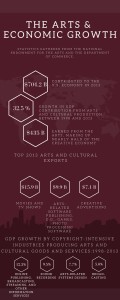Tags
Related Posts
Share This
Graduation Trepidation
You’ve scaled the vertical wall, making leaps and bounds from window to fire escape, sometimes crawling apathetically over the brick. Your safety net of school therapists and nurses and teacher conferences is ripping away beneath you, the web snapping square by square. The once parenthetical student loans have accrued in a trash heap of responsibility you’ve tried to ignore for four years, and are beginning to capitalize. You are nearing the rooftop, at which point you will be exposed to the innumerable opportunities the world has to offer, and while you’ve improved or mastered your art, you can’t help but wonder, what if the last four years was all just for a stupid fucking useless art degree?
Everything you’ve been taught, every class you’ve loathed and loved, now will either prove its worth or disintegrate into the catacombs of your brain. We all know someone with an art degree, or any degree for that matter, who works in a completely unrelated field that doesn’t exercise any knowledge obtained in college, or doesn’t justify their massive debt.
In today’s work force, very little emphasis is placed on the track you choose to pursue, and largely on the possession of the degree itself. According to a 2013 study from CareerBuilder, “nearly half (47 percent) of college-educated workers said their first job after college was not related to their college major,” and 32 percent of college-educated workers reported that “they never found a job related to their college major.”
These disheartening statistics are followed by a comment from the vice president of Human Resources at CareerBuilder, Rosemary Haefner. “A college education will give you a significant advantage in the job market. In a tough economic climate, college graduates must be flexible and open to taking positions outside their area of study. Taking the knowledge gained in college and branching out with it in unexpected directions is common after graduating,” Haefner says. “Odds are, you won’t get that dream job right out of school, but it’s important to remember that there are many different paths.” While that sounds slightly more encouraging, what Haefner is really saying through euphemism is that your degree alone will help you obtain a job, despite what that degree pertains to, and fingers crossed, when you’re older, you will get to do what you’ve slaved your youth away for.
The “employers just want to see that you’ve completed something” narrative has become a predominant motivator on the path to graduation. This rationality is discouraging for students who are passionate about their studies, who shell out countless hours and too much money for it, who want their hard work to be rewarded in their career paths. You want to know that when you dedicate four years of your life to the knowledge of a track, it won’t be in vain. So you wonder, what can you, as an almost graduate, do to utilize those four years at an art school?
Firstly, you need to ignore that friend that scoffs at your homework assignments and the aunt who asks, “so what exactly do you plan on doing with that degree?” Recognize that art is everywhere. Whether it’s graphic design, literature, film, theatrics, music, etc., there is no shortage of creativity in our society. Our economy requires creative brains for advertising and marketing, for magazines, for movies and other entertainment, yet our society is conditioned to think seeking creativity in a vocation is impractical.
 In a study conducted by The National Endowment for the Arts and the Department of Commerce, it’s shown that in 2013, the arts and cultural production contributed $704.2 billion to the U.S. economy, equating to 4.2 percent of the overall GDP. That’s a 32.5 percent increase in GDP between 1998 and 2013, proof that the value of the arts is imperative to the country’s economic growth.
In a study conducted by The National Endowment for the Arts and the Department of Commerce, it’s shown that in 2013, the arts and cultural production contributed $704.2 billion to the U.S. economy, equating to 4.2 percent of the overall GDP. That’s a 32.5 percent increase in GDP between 1998 and 2013, proof that the value of the arts is imperative to the country’s economic growth.
According to the same study, Fine Art is a $200 billion industry annually, worldwide. The United States alone represents a whole 40 percent of the industry, or $80 billion annually, amounting to more than three times the revenue from the top U.S. sports, football, baseball, basketball, and hockey, combined.
There are four current creative industry leaders:
- Movies, video services, cable TV production, and broadcasting
- Advertising
- Publishing
- Performing Arts
Within these departments and hundreds of other artistic sectors in The Arts and Culture Industry, the U.S. is responsible for employing more than 27 million individuals. All of these statistics go to show that there is a large and expanding demand for artists in today’s society, but doesn’t lessen the fear of finding a job in your selected track.
Creative Writing and Literature senior Nicholas Thomas is set to graduate in the Spring of 2017 and says his biggest apprehension post-grad is the student loans he will have to have to confront, but also the adequacy of his knowledge in his desired career: video game design. “I’m going into a field that isn’t exactly what I’m here for, however what I’m doing here will help me in that field.” He plans to attend grad school to acquire the skills to apply his storytelling talents in the world of video games. Although he has made significant progress in refining his story ideas, he feels the need to take the next step in honing his abilities.

Senior Studio Arts Major Mike Sutton meets with Director of Career Services Deanne Brown to discuss his opportunities for an internship in his final semester. Photo by Jennifer Rapinchuk
Career Services Director Deanne Brown spoke with Jackalope Magazine on the importance of motivation and future planning. “It’s important for graduates to remember that they are adequately prepared for the work force and highly capable of finding meaningful, engaging jobs in their chosen field. Persistence and ambition is crucial and an optimistic outlook makes the journey more enjoyable.”
Aside from the senior’s concern over finding employment, student loans are the heaviest responsibility most graduates are forced to face. “These things can seem extremely overwhelming without support and a clear game plan,” Brown says. Her goal is to remove some of the anxiety from the shift into “the real world,” and does so by looking at each student’s unique situation and helping them to form a realistic financial strategy. “I highly encourage students to reach out anytime they face dilemmas, hurdles or need career support and of course, it is always a highlight of my day when graduates share their successes and exciting achievements.”






 Jackalope Magazine is the student magazine of Santa Fe University of Art and Design. Building on the interdisciplinary nature of our education, we aim to showcase the talent of our university and character of our city.
Jackalope Magazine is the student magazine of Santa Fe University of Art and Design. Building on the interdisciplinary nature of our education, we aim to showcase the talent of our university and character of our city.
Recent Comments